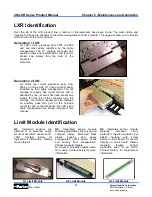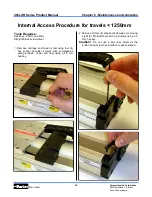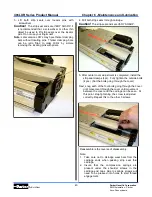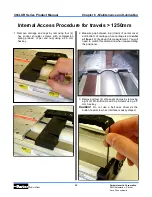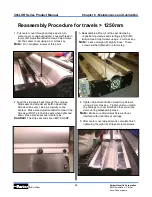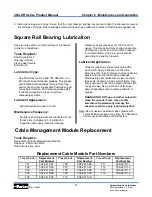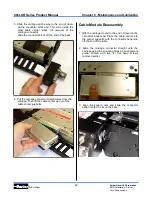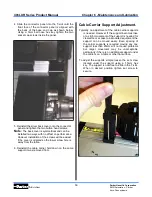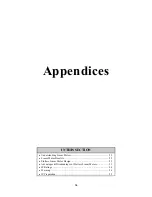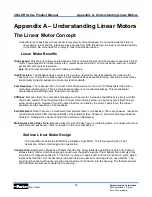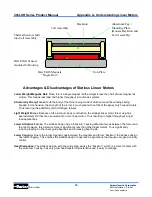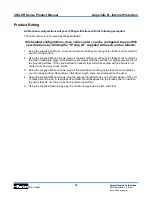
Parker Hannifin Corporation
EMN Automation
-
Parker
Irwin, Pennsylvania
55
406LXR Series Product Manual
Appendix A
-
Understanding Linear Motors
Appendix A –
Understanding Linear Motors
The Linear Motor Concept
Linear Motors are basically a conventional rotary servo motor unwrapped. So now what was the stator is
now called a forcer and the rotor becomes a magnet rail. With this design, the load is connected directly
to the motor. No more need for a rotary to linear transmission device.
Linear Motor Benefits
High speeds:
Only the bus voltage and the speed of the control electronics limit the maximum speed of a linear
motor. Typical speeds for linear motors are 3 meters per second with 1 micron resolution and over 5 meters
per second with courser resolution.
Note: Motors must be sized for specific loading conditions.
High Precision:
The feedback device controls the accuracy, resolution, and repeatability of a linear motor
driven device. And with the wide range of linear feedback devices available today, resolution and accuracy
are primarily limited to budget and control system bandwidth.
Fast Response:
The response rate of a linear motor driven device can be over 100 times faster than some
mechanical transmissions. This is simply because there is no mechanical linkage. This means faster
accelerations and settling times, thus more throughput.
Stiffness:
Because there is no mechanical linkage in a linear motor, increasing the stiffness is simply a matter
of gain and current. Thus the spring rate of a linear motor driven system can be many times that of a ball
screw driven device. However it must be noted that this is limited by the motor
’
s peak force, the current
available, and the resolution of the feedback.
Zero Backlash:
Since there are no mechanical components there is no backlash. There are however, resolution
considerations which effect the repeatability of the positioner (See Chapter 2,
General Table Specifications
,
Chapter 3,
Setting Home Sensor
and
Z Channel Position Reference
)
Maintenance Free Drive Train:
Because linear motors of today have no contacting parts, in contrast with screw
and belt driven positioners, there is no wear on the drive mechanism.
Slotless Linear Motor Design
The Linear Motor inside the 406LXR is a Slotless Linear Motor. The following will give a brief
description of the motor design and construction:
Construction:
Designed by Divisions of Parker Hannifin, the motor takes its operating principle from Parker
’
s
slotless rotary motors which have grown popular over the past few years. The magnetic rail is simply a flat
iron plate with magnets bonded to it. The forcer is unique. It begins with a coil and a
“
backiron
”
plate, which
is placed behind the coil. This assembly is placed inside an aluminum housing with an open bottom. The
housing is then filled with epoxy, securing the winding and
“
backiron
”
into the housing. The thermal sensors
and hall effect sensors are mounted to the housing.
Summary of Contents for 406LXR Series
Page 30: ...26 ...
Page 38: ...34 ...
Page 64: ...Parker Hannifin Corporation EMN Automation Parker Irwin Pennsylvania Notes ...
Page 65: ...Parker Hannifin Corporation EMN Automation Parker Irwin Pennsylvania Notes ...
Page 66: ...Parker Hannifin Corporation EMN Automation Parker Irwin Pennsylvania Notes ...
Page 67: ...Parker Hannifin Corporation EMN Automation Parker Irwin Pennsylvania Notes ...
Page 68: ......

